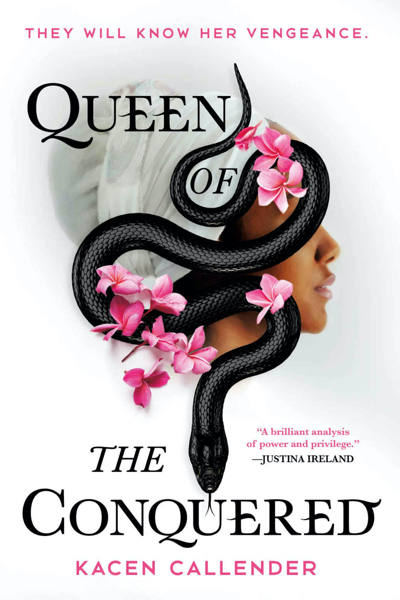
Kacen Callender’s Queen of the Conquered, the first book in the Islands of Blood and Storm series, is a searching story of slavery, oppression and the inner violence of power. Set in a Caribbean island chain that had been colonized hundreds of years earlier by a light skinned people known as the Fjern, the novel tells the story of the descendent of a freed slave as she maneuvers to become queen of the islands so that she can free her people.
Sigourney Rose, daughter of a family that had risen to wealth in a land where slaves are ruthlessly suppressed, uses her special mental powers, known as kraft, to gain a position in one of the aristocratic families so that she can have a chance at winning the throne. But her motives are mixed.
While she is bent on revenge for the slaughter of most of her family during her childhood, she is also drawn to the power of the Fjern and wants it for herself. Beyond her personal motives is the wish to free her own people from slavery, but her commitment to that goal is called into question by the slaves who distrust her and her own conscience.
As she narrates her story, she bluntly describes the horrors she must inflict on her people in order to maintain her standing among the Fjern, knowing all the while that they despise her for her dark skin and slave background and would sooner kill her than let her anywhere near the throne. Yet the aging and nearly incapacitated king invites her to the royal island where he will select his successor.
This is an unheard of honor for a member of a former slave family but also extremely dangerous. These periods of royal succession are well-known for score-settling among the elite families. It is a time of blood-letting among the Fjern, and Sigourney’s chances of surviving would be slim if not for her ability to enter the minds of others, learn their thoughts and memories and even turn their malevolence on themselves if she is threatened.
Sure enough, one by one, the potential Fjern rivals for the throne meet their deaths, and Sigourney becomes the main suspect. But solving this classic mystery story setup is not the main interest of the novel. It is Sigourney’s self-reflection as she is forced to confront her own complicity with the Fjern that turns this revenge and rebellion story into a powerful dramatization of the effects of power and privilege in a slave society.
Sigourney Rose’s power to enter the minds of others enables her to present their feelings of jealousy, anger, hatred, fear and contempt, often directed at her. What makes this more than a trick of narration, providing the sense of omniscience while still within her single point of view, is the way she reflects on what others think of her.
She wants to be trusted and loved, yet her relationships with two of her own slaves reveal to her the folly of those dreams of capturing the respect of the very people she oppresses. She feels the ambivalence of loyalty and love mixed with mistrust and anger even from the older servant, Marieke, who has raised her from childhood and remains her most faithful attendant.
Even more direct is the constant challenge of the slave Løren, who she meets when he leads an unsuccessful attempt to kill her. Sigourney is intrigued by him because he has the power to block her entry into his thoughts. She spares his life, though later has him brutally whipped, in order to learn more from a man she senses has a remarkable inner strength.
When he finally does allow her to get into his mind, she sees plainly how deeply she is hated and mistrusted by her own people and has to consider the most painful question. Is she the villain of her story rather than its triumphant heroine, the savior of her people? She has chosen to wear the white dress of the aristocrats and to share in their privilege. She has beaten and killed her own people to maintain her position in the eyes of the Fjern, all the while knowing that they will always hate her.
Sigourney Rose is a truly interesting character, knowing the contradictions of her life, yet binding herself to continue on a course of action that seems to help no one. She remains suspended between these two orders of society, living in privilege and power, hoping to relieve the misery of the oppressed yet stepping on the necks of the downtrodden to fulfill her ambition.
Kacen Callender mentions in an interview published with the Kindle edition of Queen of the Conquered that they developed the idea of the book partly by reflecting on their own position as a person of color enjoying a certain level of privilege and doing little to change the underlying injustice in society. This is a powerful theme that few have explored so well.
Callender embeds the ideas about the inner violence of power and its brutal consequences for the oppressed in an exciting story dominated by strong characters. Their pared down language is full of the driving emotions that push the people of the islands into hard confrontation and rebellion. It’s an exciting story, and I look forward to the sequel, King of the Rising.




Leave a Reply